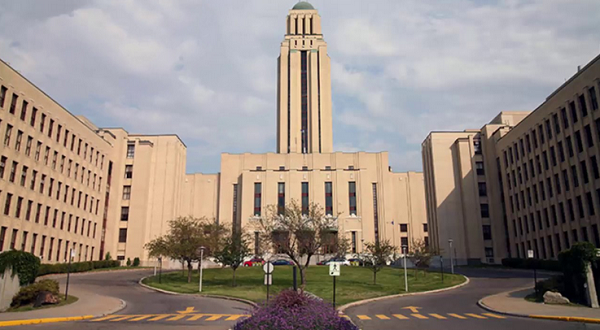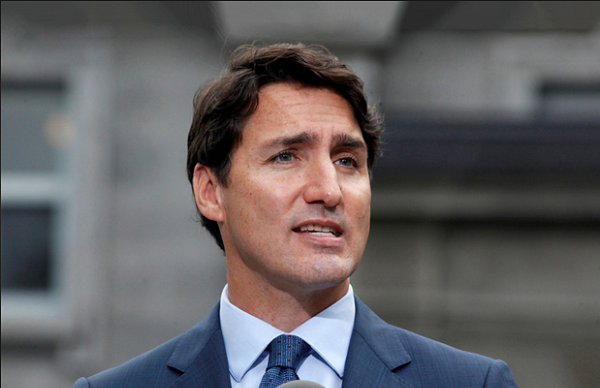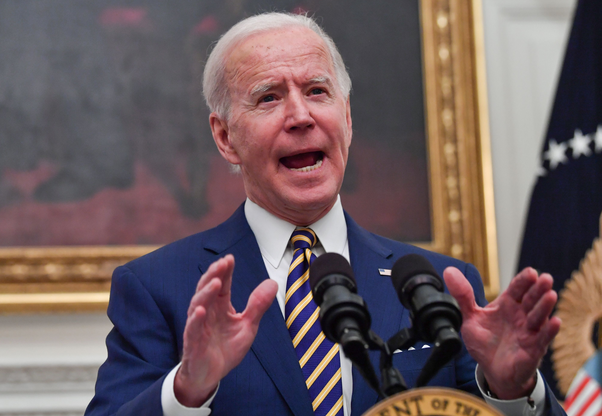Jagmeet Singh ends NDP deal with Liberals that keep the minority Trudeau’s Liberal in power
The prospect of a snap federal election is suddenly on the table after NDP Leader Jagmeet Singh prematurely killed the 2022 deal he struck to support Prime Minister Justin Trudeau’s minority government.
The early collapse of the agreement — which gave Trudeau the necessary votes to pass three federal budgets and operate as if he had a majority — does not automatically trigger an election.
That’s because the 24 NDP members of Parliament could continue to support the 154-member minority Liberal government on a vote-by-vote basis — which is exactly what the Liberals are counting on — rather than automatically moving to declare lost confidence in Trudeau.
It does mean, however, that Singh could introduce a non-confidence vote or vote for any such motion the Conservatives or Bloc Québécois could present, potentially plunging the country into a federal election campaign — which the Conservatives immediately demanded, and Trudeau cautioned against. Parliament is set to resume sitting on Sept. 16.
But ahead of that, Singh released a campaign-style video statement on social media Wednesday to announce he was pulling out of the “supply and confidence agreement” 10 months before it was set to expire because the Liberals cannot be trusted to fight or win what he called a battle “for the future of the middle class.”
He did not cite specific policy differences except to say the governing Liberals “will always cave to corporate greed,” “have let people down,” and “don’t deserve another chance.”
Over images of the NDP leader glad-handing with Canadians and party supporters, and walking with a child, Singh talked tough about getting ready for the next federal vote. He said the Conservatives would form a government that would make deep cuts that will hurt workers, retirees, young people, patients, and families “in order to give more to big corporations and wealthy CEOs.”
“In the next federal election, Canadians will choose between Pierre Poilievre’s callous cuts or hope — hope that when we stand united, we win, that Canada’s middle class will once again thrive
“I am running for prime minister because together, we can and will stop Conservative cuts,” he said.
Singh was not available to answer media questions, but a senior NDP source central to the decision, speaking on the condition they not be named, told the Star there wasn’t a singular issue that tipped the scales in recent weeks. The insider acknowledged that the Liberals’ handling of last month’s railway shutdown, and the government’s order that forced the labour dispute into binding arbitration, did little to inspire renewed confidence in the deal.
Wednesday’s move was a “long time coming,” and discussions with caucus began in earnest when last spring’s session of Parliament started winding down, said the source.
“I think there’s a number of frustrations, as always,” the source said, characterizing Liberal progress on issues like housing and grocery prices as “exceedingly slow” and “halfway measures.”
“We’ve delivered as much as we’re going to, as much as they’re willing to, and so it’s just time to move on now.”
The NDP says it is in solid financial shape, with the senior source saying the party paid off its $22-million loan from the 2021 campaign earlier this year, and can withstand an early election call — a possibility they said could happen “sooner rather than later.”
The party has nominated more than 50 candidates with “many more ready to go,” and the source said Wednesday’s decision to exit the deal is expected to push more people to come forward.
Conservative Leader Pierre Poilievre, who wrote to Singh last week demanding he pull out of the deal, dared the NDP leader to follow through on his latest “media stunt.”
Speaking in Nanaimo, B.C. — where Trudeau will meet his restive Liberal caucus next week — Poilievre said Singh’s decision to can the deal finally offers the Conservatives a chance to topple the government.
“But it will depend on whether sellout Singh is serious or a stuntman. Will he vote for a carbon tax election at the earliest opportunity or will he vote again to keep the costly coalition with Trudeau in power?” Poilievre said.
Poilievre called on Singh to vote non-confidence in Trudeau “at the earliest opportunity” and, speaking in French, he called on the Bloc Québécois Leader Yves-François Blanchet to do the same.
However, it is not clear how soon in the parliamentary calendar such a vote could be called. This fall, the Liberal government is expected to allot seven days for opposition party motions, with five of those to the Official Opposition Conservatives, and one each to the NDP and BQ. If it wants to buy time, the Trudeau government could delay those days until the late fall, meaning a confidence vote could be pushed to the end of November or early December.
Although Liberals last week at a cabinet retreat publicly predicted the deal with the NDP would endure until next spring as planned, privately Liberal sources have said they expected Singh might pull out before the end of the year because he was not gaining traction in the polls.
Still, on Wednesday, Singh’s move took many of them by surprise.
Trudeau, speaking less than an hour after Singh’s video went public, said he would remain focused on ensuring Canada’s economic recovery continues, hailing the Bank of Canada’s decision Wednesday to cut the interest rate to 4.25 per cent as proof his government’s approach is working, and underscoring progress on $10-a-day daycare, dental care and free insulin and contraceptives.
In Rocky Harbour, Newfoundland to highlight federal funding for a provincial school lunch program, Trudeau said he looked forward to talking to Singh about how they could continue to work together to “invest in the future, because that’s what we’re doing.” But he framed Singh’s decision as playing politics.
“The NDP is going to have to make decisions about whether or not they want to stand with Pierre Poilievre, who’s going to cut the school food programs, cut dental care, not deliver on pharmacare, or whether they’re going to focus on what it means to Canadians to be there to give them support through this difficult time,” he said.
“Every politician gets to choose whether they want to play politics or whether they want to serve Canadians, and I certainly hope the NDP will stay true to its fundamental values, which is making sure that Canadians get the support they need, and keeping away the austerity, the cuts and the damage that will be done by Conservatives if they get the chance,” Trudeau said.
Trudeau and Singh negotiated and signed their co-operation agreement in the aftermath of chaos caused by the truckers’ convoy blockade of Ottawa and border crossings in the spring of 2022, and as war in Ukraine broke out. Although the Conservatives, then in the midst of a leadership race, blasted it as a Liberal-NDP “coalition,” it was never a formal coalition. It never guaranteed the NDP positions in cabinet or a veto on decision-making.
Instead, the deal secured advancements on a series of progressive policies, which the Liberals agreed to in exchange for Singh’s support in votes of confidence in the Commons and in committees on a range of budgetary and key policy matters like dental care, pharmacare and federal anti-scab legislation.
Polls show the NDP is at between 15 and 20 per cent in public support, has gained nothing from supporting the Liberals, and the Liberals under Trudeau have plunged in the polls to the low- to mid-20s in the face of withering criticism by the Conservatives. Meanwhile, the Conservatives, pulling in more than 40 per cent in most polls, have a wide lead that puts them in reach of a majority government if a vote were held today.
Just a few short months ago, Singh told the Star’s Althia Raj that he viewed the deal as a way to leverage additional changes from the Trudeau government, underscoring the ongoing need to improve the dental care program and benefits for disabled Canadians. “We want to see the work finished,” he said then.
However, a New Democrat with a senior position in Canada’s labour movement, who spoke to the Star earlier this week on the condition they not be named, said the Liberals’ decision to impose binding arbitration to end a work stoppage after Canada’s two largest railways and the union representing their workers failed to reach a new contract, crossed a line for the NDP.
“That decision was pretty bruising to the relationship,” they told the Star.
In an interview with the Star last month, veteran NDP MP Charlie Angus said he felt his party had “achieved what we were going to achieve in the agreement.”
“There’s an election coming. So now we need to begin a transition. Where are we going next?” he said.
This article was first reported by The Star












